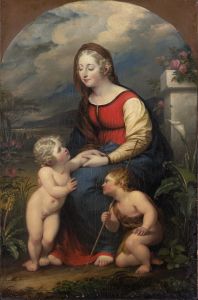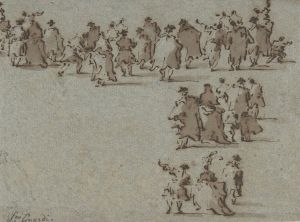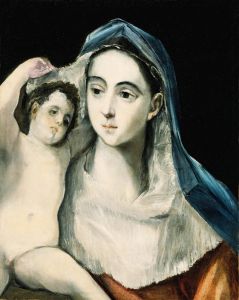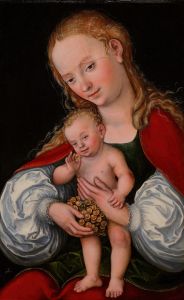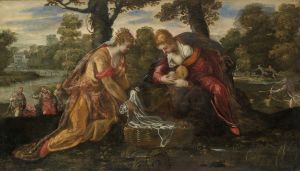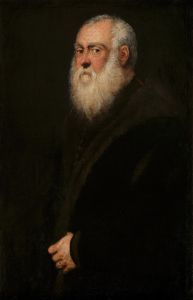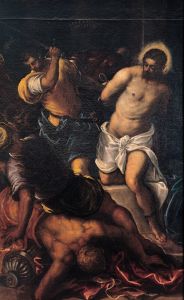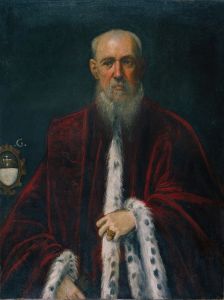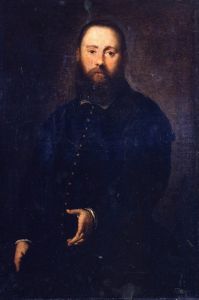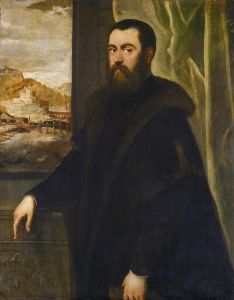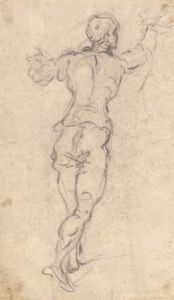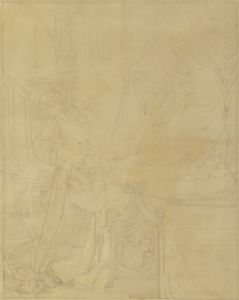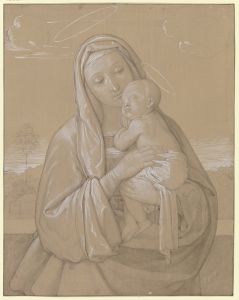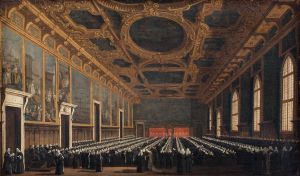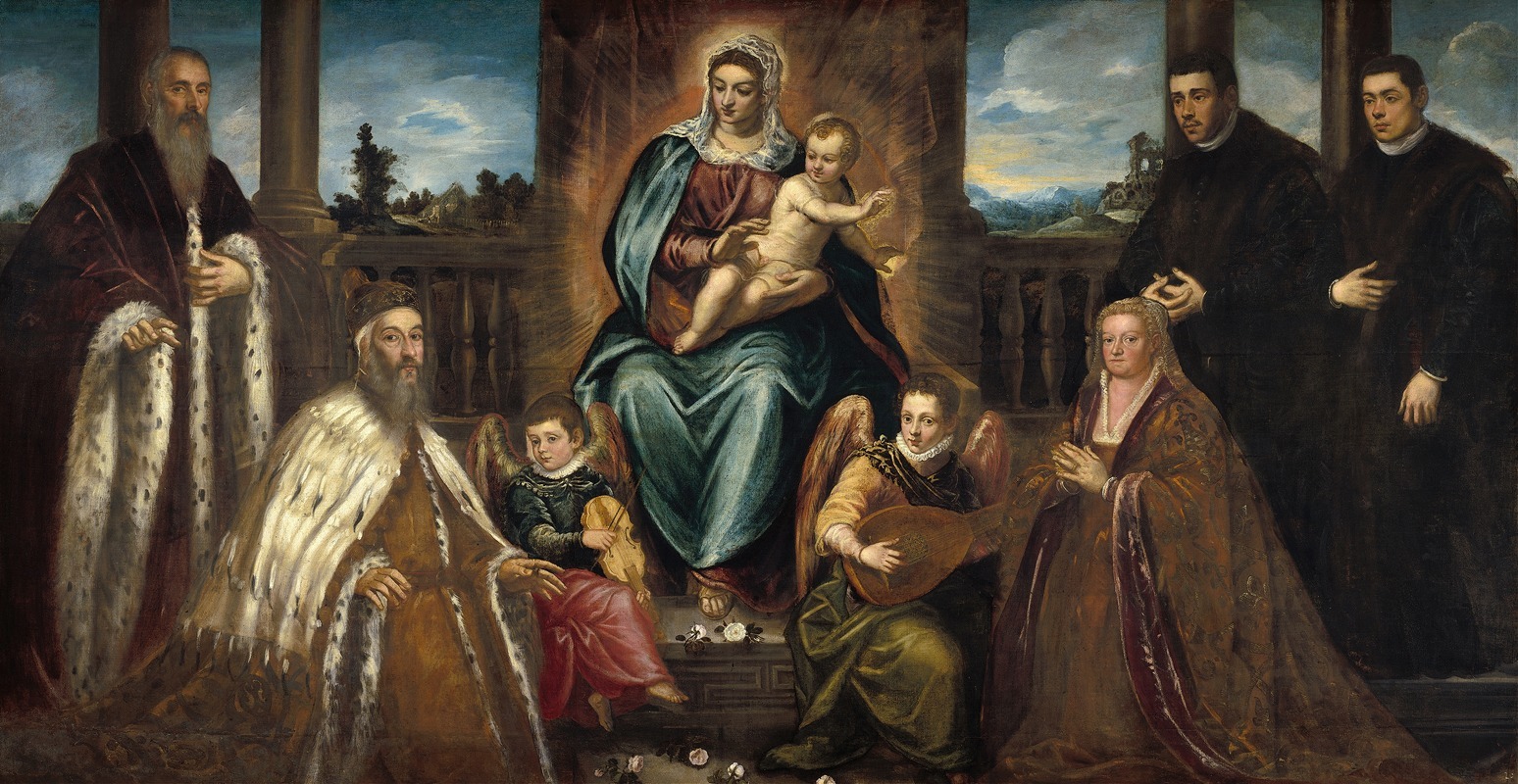
Doge Alvise Mocenigo and Family before the Madonna and Child
A hand-painted replica of Jacopo Tintoretto’s masterpiece Doge Alvise Mocenigo and Family before the Madonna and Child, meticulously crafted by professional artists to capture the true essence of the original. Each piece is created with museum-quality canvas and rare mineral pigments, carefully painted by experienced artists with delicate brushstrokes and rich, layered colors to perfectly recreate the texture of the original artwork. Unlike machine-printed reproductions, this hand-painted version brings the painting to life, infused with the artist’s emotions and skill in every stroke. Whether for personal collection or home decoration, it instantly elevates the artistic atmosphere of any space.
"Doge Alvise Mocenigo and Family before the Madonna and Child" is a notable painting by the renowned Italian Renaissance artist Jacopo Tintoretto. This artwork is a quintessential example of Tintoretto's dynamic style and his ability to blend religious themes with portraiture, capturing the essence of Venetian society during the late Renaissance period.
Jacopo Tintoretto, born Jacopo Robusti in 1518, was a prominent figure in the Venetian school of painting. Known for his vigorous brushwork and dramatic use of perspective and light, Tintoretto's works often depicted religious and mythological scenes infused with a sense of movement and emotion. His style was heavily influenced by the Mannerist movement, characterized by its artificial elegance and complex compositions.
The painting "Doge Alvise Mocenigo and Family before the Madonna and Child" was created during a period when Tintoretto was at the height of his artistic career. Alvise Mocenigo was the Doge of Venice from 1570 until his death in 1577. The Doge was the chief magistrate and leader of the Republic of Venice, a position of great power and influence. The inclusion of the Doge and his family in the painting underscores their prominence and the intertwining of religious devotion with political authority in Venice.
In the painting, the Madonna and Child are depicted in a celestial realm, symbolizing divine presence and grace. The Madonna, a central figure in Christian iconography, is portrayed with the Christ Child, emphasizing themes of motherhood and salvation. The Doge and his family are shown in a posture of reverence and devotion, kneeling before the holy figures. This composition not only highlights the piety of the Mocenigo family but also serves as a testament to their social status and influence.
Tintoretto's use of color and light in this painting is particularly noteworthy. The contrast between the divine light surrounding the Madonna and Child and the more subdued tones of the earthly figures creates a visual hierarchy, drawing the viewer's eye to the central religious figures. Tintoretto's skillful manipulation of perspective adds depth to the composition, enhancing the sense of a spiritual encounter.
The painting is also significant for its portrayal of Venetian fashion and culture during the Renaissance. The attire of the Mocenigo family reflects the opulence and sophistication of the Venetian elite, with rich fabrics and intricate details that were characteristic of the period. This attention to detail not only adds to the realism of the portrait but also provides valuable insights into the cultural context of the time.
"Doge Alvise Mocenigo and Family before the Madonna and Child" is housed in the church of San Giorgio Maggiore in Venice, a location that further emphasizes its religious significance. The church itself is an architectural masterpiece designed by Andrea Palladio, and Tintoretto's painting complements its grandeur and spiritual ambiance.
In summary, Jacopo Tintoretto's "Doge Alvise Mocenigo and Family before the Madonna and Child" is a masterful blend of religious iconography and portraiture, reflecting the artist's unique style and the cultural milieu of Renaissance Venice. Through its composition, use of light, and attention to detail, the painting captures the reverence and status of the Mocenigo family while showcasing Tintoretto's artistic prowess.





